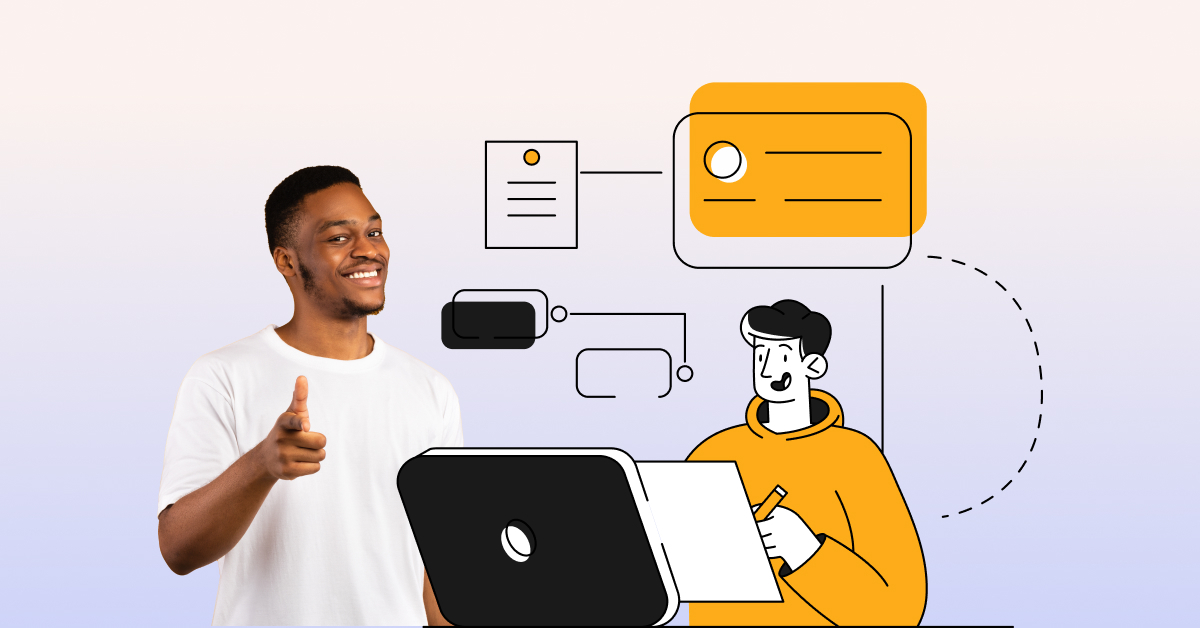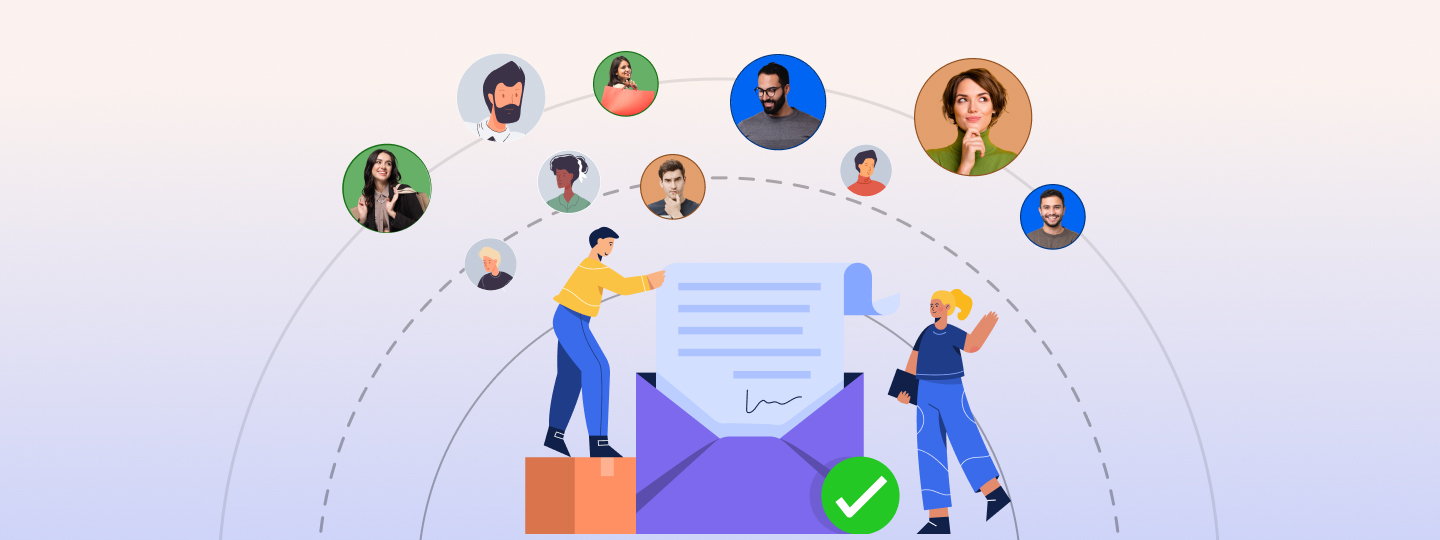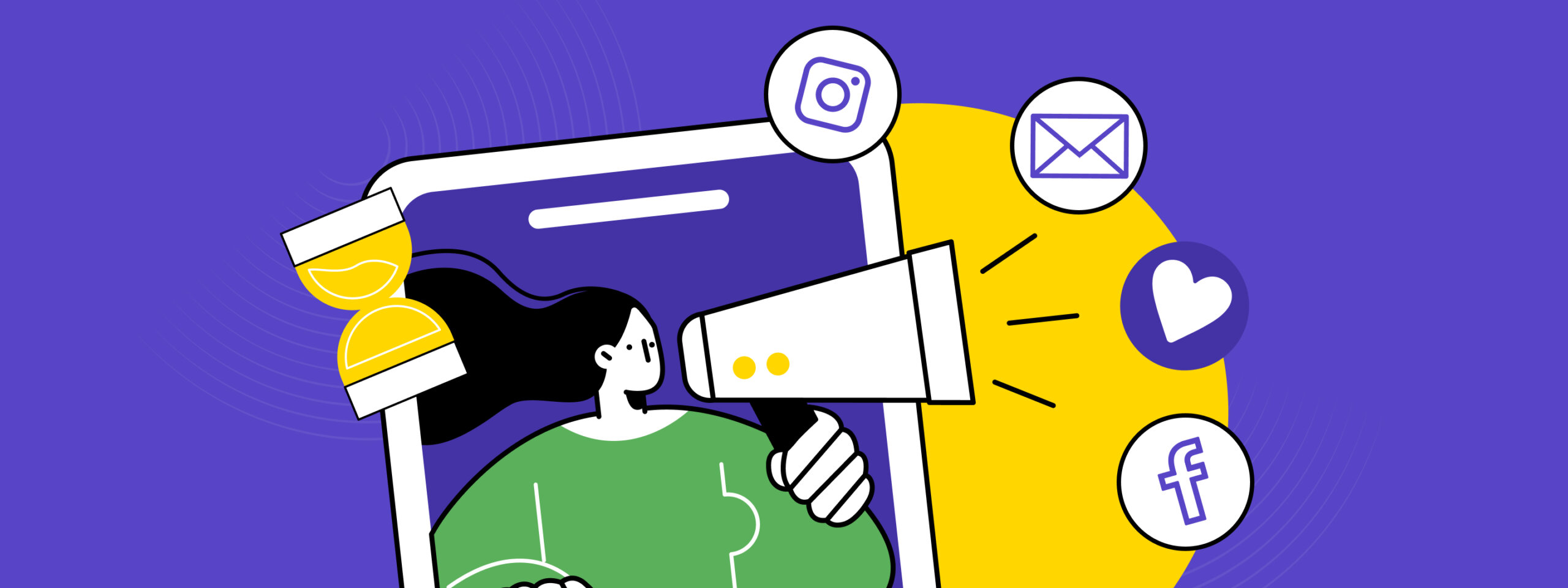Ever found yourself scratching your head, wondering why your EdTech campaigns aren’t getting the eyeballs they deserve? Don’t stress! In this piece, we’re diving deep into the world of Click Through Rates (CTRs), focusing on why they’re the lifeblood of EdTech marketing and how to optimize them. And the answer to that is audience segmentation.
We’re living in the age of information, where your audience is just a click away. But grabbing their attention? Now, that’s the real deal. CTR optimization isn’t just a fancy marketing term; it’s the driving force behind ensuring your EdTech services are seen, clicked, and engaged with. It’s the magic ingredient that can turn the tide in your favor amidst the cutthroat competition.
Let’s take a simple example. Imagine you’re launching an online coding course for kids. You’ve got engaging content, interactive lessons, and expert tutors. But if your campaign targeting all parents, instead of those specifically interested in coding for their kids, you’re shooting in the dark. This is where audience segmentation comes into play.
Audience segmentation is like using a compass in your marketing journey. It points you in the right direction – towards those who are most likely to click on your ads and convert. It’s the secret sauce to boosting your CTR, ensuring your ads reach the right people at the right time.
As an EdTech marketer, understanding the nuances of audience data is paramount. It’s like learning the rules of the game before you play. And once you’ve got the hang of it, there’s nothing stopping you from winning!
So, buckle up, folks! We’re about to embark on a journey exploring 7 powerful strategies that will supercharge your CTRs and set you apart in the bustling EdTech arena. Let’s get cracking!
Strategy 1: Segment audience by education level and interest
Ever had that nagging feeling that your marketing efforts are just shouting into the void? That’s where audience segmentation becomes your secret weapon. By carving out your audience based on their education level and what gets their learning juices flowing, you can tailor your messaging to hit the bullseye every time.
Let’s illustrate this with an example. Say, your potential customers span both college-educated folks and high school graduates. Wouldn’t you want to flex your vocabulary muscles a bit more for the former group, and keep things simple yet effective for the latter? That’s the power of customizing your messaging based on education level.
Here’s another scenario. Imagine you’re rolling out a brand new product tailored for those who live and breathe technology. You’d want to spotlight those cutting-edge technical features that make your product a tech enthusiast’s dream, wouldn’t you? On the other hand, if your audience is less tech-savvy, you might want to turn the spotlight on the user-friendliness of your product instead.
Getting to know your audience is like learning the secret handshake to their club. And this audience segmentation based on their education and interests helps you craft marketing messages that resonate, connect, and most importantly, inspire them to click. It’s like having a secret map that leads straight to your audience’s heart (and their mouse cursor). Isn’t that just what you need to ace your CTR game?
Strategy 2: Cater to different learning styles
Understanding these diverse learning styles is not just crucial—it’s the cornerstone of designing campaigns that optimize Click-Through Rates (CTRs). It’s all about ensuring that each learner feels seen, heard, and catered to.
Consider this: you’re an EdTech company marketing an online course about climate change. For the visual learners in your audience, you might use ads featuring engaging video snippets or vibrant infographics. And for the kinesthetic learners? You could showcase interactive simulations or hands-on exercises in your promotional materials.
Or, let’s say you’re promoting a coding bootcamp. You could create two sets of ads—one featuring snippets of engaging lectures for the auditory learners, and another showcasing the hands-on coding challenges for the kinesthetic learners.
By tailoring your marketing campaigns to these unique learning styles, you make your audience feel understood. You show them that your course isn’t just another generic product—it’s an educational experience tailored to their needs. This personalized touch can significantly boost your CTRs, as potential learners are more likely to click on an ad that resonates with them.

So, whether you’re reaching out to a visual learner who needs to see to believe, an auditory learner who hangs onto every word, or a kinesthetic learner who learns by doing, our goal is to craft ad campaigns that resonate with each learner’s style. Because when your ads speak directly to your audience’s learning preferences, the clicks just keep on coming!
Strategy 3: Target specific demographics
When it comes to hitting the bullseye with your target audience, it’s all about getting up close and personal with your demographics. Ask yourself: Who am I trying to reach? What makes them tick? Where do they like to hang out, online or offline?

Getting a grip on these questions allows you to tweak and twist your marketing messages, making them irresistible to your target demographics. It’s like baking their favorite cake – you want to make sure it has all the ingredients they love!
For instance, let’s say you’ve created an EdTech platform aimed at helping high school students in the US prepare for their SATs. Your key demographic here would be high school students, and possibly their parents too. You’d want to tailor your marketing campaigns to appeal to their concerns – acing the SATs, getting into a good college, and paving the way for future success.
Or perhaps you’ve developed an online course that teaches retirees how to navigate modern technology. In this case, your marketing campaigns might focus on showing how user-friendly and accessible your course is, and how mastering technology can empower them in their daily lives.
Understanding the unique needs and interests of your target demographics is like having a secret key. It opens the door to deeper connections, more meaningful relationships, and ultimately, higher Click-Through Rates. So, take a moment to really get to know your demographics. It’s a small investment that could yield big returns for your EdTech business.
Strategy 4: Leverage psychographic segmentation to connect with users on an emotional level
Marketing isn’t just about ticking the boxes of demographics anymore. It’s about stepping into your audience’s shoes and seeing the world from their perspective. Welcome to the world of psychographic audience segmentation – a powerful lens that brings your customers’ personalities, values, and lifestyles into sharp focus.
This kind of deep dive isn’t just insightful, it’s transformative. It lets you tailor your messaging to strike a chord with your audience, creating a resonance that echoes longer and louder. It’s about creating an emotional bond that goes beyond the clicks and conversions, sparking a sense of loyalty that sets your brand apart in the crowded EdTech space.

Let’s say you’re marketing a language learning app. With psychographic audience segmentation, you’re not just reaching out to ‘people who want to learn a new language’. You’re connecting with ‘curious explorers who love to immerse themselves in new cultures’, or ‘ambitious professionals who want to expand their skillset and open up new career opportunities’. Can you feel the difference?
So, if you’re ready to elevate your marketing game, it’s time to jump into the deep end of psychographic segmentation. Start crafting messages that don’t just reach your users, but touch them on a personal, emotional level. After all, the path to the highest CTRs is paved with meaningful connections.
Strategy 5: Leverage seasonal trends and events
In the marketing world, timing is everything. And when it comes to EdTech, there’s a rhythm to the year that you can dance to for optimizing your CTRs. We’re talking about seasonal trends and key events – your secret weapons to make your marketing efforts hit the high note.
Imagine this – it’s August, and there’s a buzz in the air as students prepare to head back to school. This is the perfect time to put the spotlight on your EdTech solutions that can help them ace the new academic year. Or perhaps it’s spring, and graduation is around the corner. Why not showcase how your platform can help graduates prepare for their next big step – whether it’s college or the world of work?

But it’s not just about the big events. Even the subtler seasonal trends can be harnessed to your advantage. Maybe it’s the New Year, when everyone is ready to embrace new learnings. Or perhaps it’s the summer holidays, when students have more time to explore additional courses. Aligning your marketing campaigns with these ebbs and flows can make your messaging feel more relevant and timely, sparking that all-important click.
So, if you’re ready to amp up your marketing game, it’s time to tune into the rhythm of the EdTech year. Capitalize on those back-to-school rushes, graduation moments, and seasonal trends to make your campaigns sing.
Strategy 6: Utilize Machine Learning for customer insights
In today’s digitally-driven world, understanding your customers is the key to unlocking marketing success. The more you know about them, the more accurately you can anticipate their needs and wants. Enter machine learning—the magic wand that turns mountains of data into gold nuggets of customer insights.

Machine learning algorithms are like Sherlock Holmes on steroids. They can sift through colossal amounts of audience data and spot patterns faster than you can say ‘EdTech’. They can help you paint a detailed picture of your customers—who they are, what they like, and how they behave.
But it’s not just about understanding the present. Machine learning also doubles as a crystal ball, enabling you to predict future customer behavior. It’s like having a sneak peek at tomorrow’s newspaper today!
For instance, by analyzing past click patterns, machine learning can help you predict which users are more likely to click on your ads. Armed with this information, you can fine-tune your campaigns to optimize your CTRs.
With machine learning, the days of shooting in the dark are long gone. Now, even small businesses can take advantage of this powerful technology to glean customer insights like never before. So, if you’re ready to step into the future of marketing, it’s time to embrace machine learning. After all, when your marketing strategies are guided by data, every click counts!
Strategy 7: Employ retargeting, lookalike audiences, and predictive segmentation
Ever browsed a website, only to find its ads popping up wherever you go online? That’s not just coincidence – that’s retargeting working its magic! Retargeting uses cookies to keep a tab on who’s visiting your website, allowing you to show targeted ads to this interested audience even after they’ve left your site. It’s like a friendly reminder saying, “Hey, remember us? We’ve got something you might like!”

But what about reaching new audiences who are likely to be interested in your EdTech offerings? That’s where lookalike audiences come in. Picture this: you’ve got a group of loyal customers who love your product. Wouldn’t it be great if you could find more people just like them? Well, lookalike audiences allow you to do just that! By analyzing the interests and demographics of your current customers, platforms like Facebook can help you find ‘lookalikes’ – people who share similar characteristics and are likely to be interested in your offerings. It’s like cloning your best customers!
But wait, there’s more! If you’re ready to take your targeting game to the next level, predictive segmentation is your secret weapon. Imagine being able to predict which users are most likely to click on your ads or convert into customers. With predictive segmentation, you can! By harnessing the power of machine learning and data analysis, predictive segmentation allows you to identify these high-potential users, enabling you to tailor your campaigns for maximum impact.
With retargeting, lookalike audiences, and predictive segmentation in your marketing toolkit, you’re not just shooting for the stars – you’re aiming for the right ones!
WebEngage’s Impact Story
Mero School, a Nepal-based online learning platform, partnered with WebEngage to optimize its CTRs and overcome the challenges of raising brand awareness, onboarding users, and converting unknown users. WebEngage, as Mero School’s first digital marketing platform, played a pivotal role in their user engagement and customer retention strategies.
Employing WebEngage’s journey designer, push notifications, and email features, Mero School implemented robust in-app campaigns and push notifications to increase user engagement and revenue. Retaining customers was a key metric, and they saw a significant increase in first-time user conversion.
Mero School’s user base expanded dramatically from 30K to 120K, with the assistance of email engagement campaigns. The platform tracked unknown users and converted them accordingly, using push notifications to encourage successful sign-ups.
WebEngage also facilitated win-back campaigns, helping Mero School to retain and engage existing customers. With the help of personalized in-app campaigns, Mero School saw a substantial increase in user engagement.
The collaboration with WebEngage led to an impressive 80% increase in converting unknown users to known users since the partnership began, thus significantly optimizing their CTRs.
Conclusion
Taking the initiative to segment your EdTech audience is essential for utilizing targeted campaigns that yield the highest CTRs possible. As we’ve discussed, there are seven main ways to effectively achieve an effective audience segmentation strategy. By incorporating targeting specific demographics, leveraging psychographic segmentation, retargeting and lookalike audiences, as well as making sure you’re taking advantage of seasonal trends and events, you can swiftly increase engagement within your educational content.
Also, be mindful of leveraging machine learning and predictive analytics in order to gain customer insights, as this will help inform your strategies for continuously optimizing your initiatives. WebEngage can assist in transforming engagement and optimizing CTRs with the right strategies tailored to the right individuals and circumstances; so don’t hesitate to take full advantage of everything they have to offer. Segmenting properly is a process that requires patience and attention but is undeniably worth it – an audience segmentation strategy built with precision will surely keep any EdTech business on track for success!
Take a demo with WebEngage, to begin your journey with segmentation.




































 Surya Panicker
Surya Panicker



